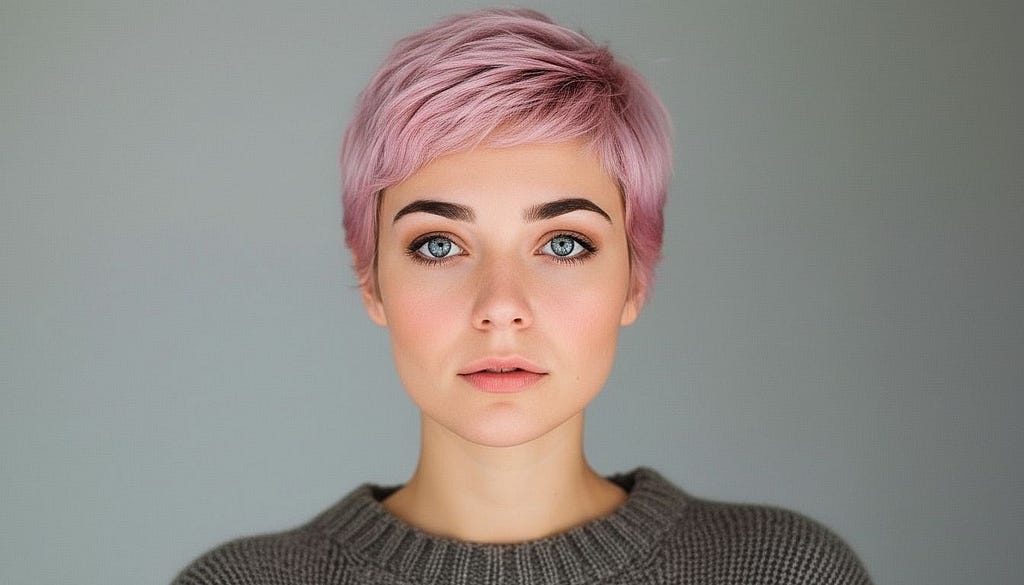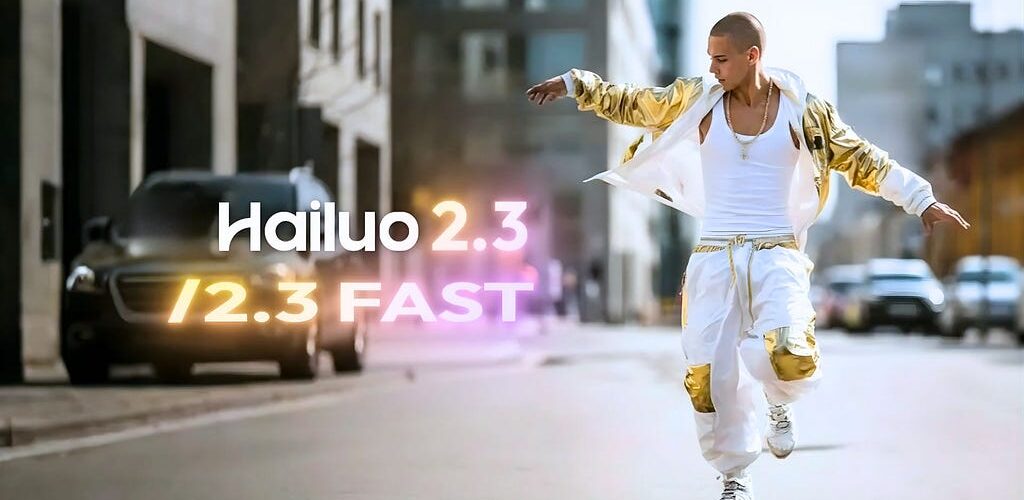Hailuo 2.3 introduces a bunch of video upgrades, including improved motion dynamics, more accurate fluid movements, and better special effects.

Hailuo 2.3 video model from Minimax just dropped, and it’s packed with some cool upgrades, including smoother movements, more natural facial expressions, and better physical realism.
If you have been keeping up with the recent releases of AI video models, you would notice a sense of familiarity with this set of improvements. It is the same kind of progress we have seen from close competitors like Sora 2 and Veo 3.1, all focusing on realism, fluid motion, and accuracy in emotional expression.
There are two variants of Hailuo 2.3:
- Hailuo 2.3: Cinematic realism and professional-grade visual fidelity.
- Hailuo 2.3 Fast: Quicker, lighter, and more affordable.
In this guide, let’s explore the brand new features of this new video model through examples. I will be using Pollo AI to access Hailuo 2.3 and generate videos.
Let’s get started.
Generating Videos with Hailuo 2.3
Head over to Pollo AI and create an account for free. On the homepage, you’ll notice an announcement about the Hailuo 2.3 release. Click on it, and you should be redirected to the video generator page.

If you don’t see the Hailuo 2.3 banner, click Create new and select the text-to-video from the set of options under the Video tab. You should be redirected to the AI video generator page.
From here, make sure to set the model to Hailuo 2.3. You can explore the other video parameters that you can adjust, such as the duration, visibility, and quality. These options allow you to fine tune results depending on the type of content you want to create.

For the prompt, this is where you describe what video you want to generate. For example, to see how well the model has improved in terms of accuracy in physical movements, I used this prompt:
Prompt: A professional parkour athlete sprinting across rooftops at sunset, jumping between buildings, and performing dynamic flips. The camera follows smoothly with dramatic angles. Clothing responds realistically to fast motion. High-energy pacing.
https://medium.com/media/13654f96ea75fd6b8d78d357674806a8/href
Awesome. As you can see in the results, the accuracy in terms of the subject’s movement has improved a lot compared to previous models. There are no more strange limb morphing issues or extra legs appearing unexpectedly in between frames. The fast motion and how the camera tracks the scene are incredibly impressive.
And check this out, if I swap the model to Google Veo 3.1, the credit consumption jumped from 20 credits to 120 credits. That difference becomes significant when generating multiple takes.

This means Veo 3.1 is six times more expensive than Hailuo 2.3, despite the quality being nearly identical for this type of scene. For creators who generate content frequently, this pricing gap influences how many revisions you can afford.
Another feature worth highlighting is the ability to set a starting frame. This allows you to convert a still photograph into a dynamic clip or control how the opening and closing shots look. The extra control is useful for creative continuity.
To do that, switch to the Img2Vid tab in Pollo AI and set the model to Hailuo 2.3. For this example, we’ll be turning a photo of a dancing ballerina into a compelling dance routine video.


In the prompt field, enter the description below.
Prompt: A ballerina performing a flowing pirouette dance routine on a grand theater stage. The camera gently circles her, tracking smooth transitions between poses. Fabric trails softly.
https://medium.com/media/0b29a5b64c882e8a54d614178e638951/href
There are still small inconsistencies when she turns with her leg raised, which is understandable for such complex movement. Even so, the animation remains cohesive enough to read as a believable performance. Few models can resolve such detailed rotational motion convincingly.
You can notice how every spin, step, and stretch feels continuous and grounded. The character no longer snaps or drifts awkwardly mid-motion. The fluidity in this scene shows how far Hailuo has come in motion interpolation and temporal stability.
Cinematic Shots Examples
Since many creators rely on Hailuo 2.3 for dramatic sequences, it helps to test expressive close ups. You can use a portrait photo and simulate an emotional transition with this prompt:
Prompt: A close-up of a young woman reacting emotionally during a dramatic scene. Her micro-expressions shift from confusion to relief to a soft smile. Subtle eye movement and blinking.
https://medium.com/media/7d4e6528af81fce812cc1e829b224138/href
In terms of facial expressions, you can see the tiny movements around the eyes and mouth that add depth to the performance. Older models often exaggerated expressions or made them feel robotic, but here the acting feels intimate and real.
You can also upload your own portrait and experiment with playful or stylized scenarios. This provides a different perspective on character behavior without losing the likeness from the source image.

Similar to the previous example, open the Img2Vid tab and upload the photo. Use the prompt below to generate a quick montage style clip:
Prompt: Lots of shortcuts, she tries out many different haircuts, her head moves only slightly, her hands interact with the hair
https://medium.com/media/a44a6c3767799ffe1bc865c0e4259298/href
Awesome! This creates a fun promotional clip, especially if you are in the salon business. The sequence highlights variety and keeps the subject at the center.
Now let’s do a sci-fi scene. Start with a reference image generated using Nano Banana with this prompt:
Prompt: A dark, stormy fantasy scene of a warrior on a cliff using a glowing blue lightning leash to restrain a roaring black dragon. Heavy rain, lightning in the sky, sparks and embers around the dragon’s mouth, dramatic cinematic lighting, highly detailed and intense atmosphere.

For the video version, we will use the Hailuo 2.3 Fast variant to see how well it handles complexity:
Prompt: A heroic warrior stands on a rain-soaked cliff at night, facing a massive flying dragon. The warrior unleashes a glowing lightning leash from their hand, wrapping it around the dragon’s neck as thunder erupts across the sky. The dragon roars and pulls back, causing sparks and energy bursts along the leash. Cinematic fast-paced shots, dramatic camera angles, quick focus on the subjects. Raindrops flicker with the lightning’s glow.
https://medium.com/media/38d7422767b644f1fa0beca176e3ae4d/href
For this example, the result isn’t very impressive because of the strange camera movements and low-quality animation. Despite using the smaller and cheaper model variant, the output was still okay.
Sci-fi shots are always fun to do, so let’s do another one. This time, I will be switching back to the standard Hailuo 2.3 model and using this prompt:
Prompt: Epic fight scene of soldiers vs a giant Sandworm. High action, motion blur, intense cinematic shaky camera. FPV of the soldier
https://medium.com/media/730be59e40e08fe51b5820668e011eff/href
This is super cool! I love how action-packed this video is. It looks like a cut-scene from a video game.
Pollo AI Pricing
Pollo AI keeps its pricing simple by offering plans based on the number of credits you need each month. These credits are used to generate videos, images, and different creative outputs inside the platform.

If you only need Pollo AI occasionally, the Lite plan is priced at $15 per month with 300 credits, which is enough for smaller batches of content. It can handle basic text-to-video, image-to-video, AI animations, and hundreds of templates.
For heavier workloads, the Pro plan costs $29 per month and gives you 800 credits. This unlocks more room to create multiple video variations, generate more image assets, and run more parallel tasks, so you do not have to wait as often.
You can adjust your monthly credits from 800 all the way up to 500,000, which can push the price up to $9,000 per month if you are handling production-level output. Pollo AI also encourages yearly billing by offering up to 50% savings when you commit to an annual subscription.
You can start small, scale up as your content demands increase, and save more when you commit yearly.
Also, remember that Hailuo 2.3 access on Pollo AI is currently at a 50% discount. This campaign runs for a limited time only, so I highly suggest trying the video model as soon as you can.
Final Thoughts
I understand that some people have reservations about using the Hailuo video model because it was created by a Chinese company. But if you disregard that part and simply compare the output side by side with the best video models out there, you’ll see how powerful and affordable this model really is.
The cinematic realism is the part that I am particularly impressed with. I can see many content creators switching from Sora 2 or Veo 3.1 to Hailuo because it is a cheaper model, and you still get the same level of quality, if not better in some scenes.
The model also supports input images, which means you can guide the scenes by setting the first and final frames. That extra level of control gives you more creative freedom when planning storyboards. You can even control the camera movements, making it a great tool if you are planning to create short films or dramatic shots that require intentional motion.
The fact that it can generate up to a 10-second video already puts it ahead of Veo 3.1 or Sora 2, which are currently limited to 8 seconds only.
So I highly encourage you to try it out and see how it fits into your workflow. Let me know what you think in the comments.

This story is published on Generative AI. Connect with us on LinkedIn and follow Zeniteq to stay in the loop with the latest AI stories.
Subscribe to our newsletter and YouTube channel to stay updated with the latest news and updates on generative AI. Let’s shape the future of AI together!

Hailuo 2.3 AI Video Generator Is Here With Improved Cinematic Realism was originally published in Generative AI on Medium, where people are continuing the conversation by highlighting and responding to this story.
Source link





































Add comment